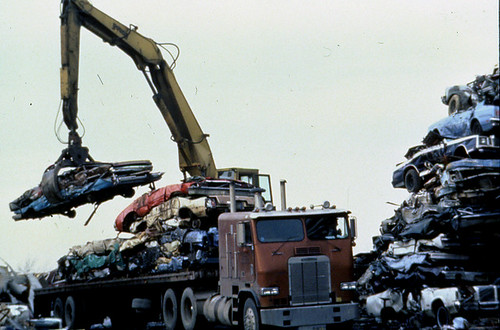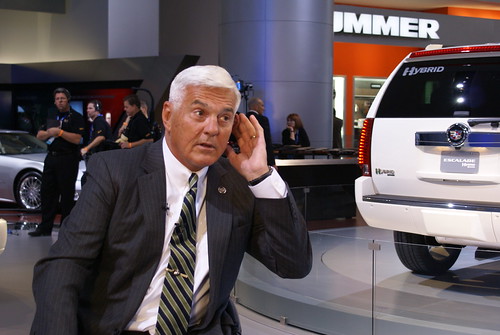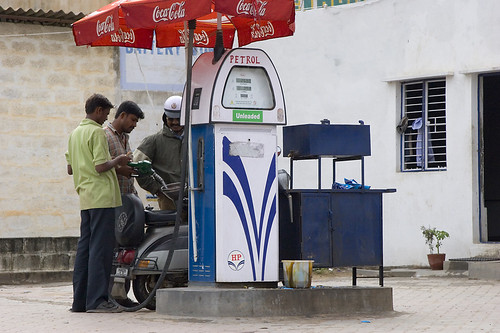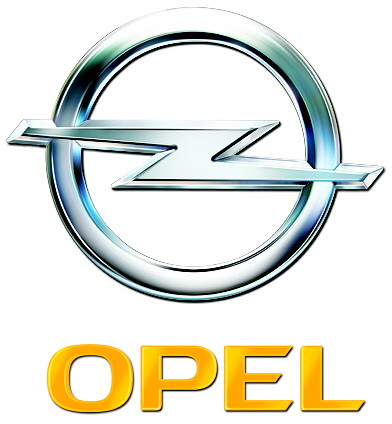US transport boss explores Spain’s high-speed rail system
(Source: AP, NY Times, The Infrastructurist, The Atlantic)
The U.S. transportation secretary says Spain’s bullet train system is a model to follow as America plans how it will spend its stimulus package. Ray LaHood says the $8 billion allocated for high-speed railways in the United States will improve the country’s infrastructure, spur economic growth and reduce greenhouse gas emissions. As part of his visit to Spain, he took a ride on the AVE from Madrid to Zaragosa and then hung around in a railway control center with the transport minister for a while. On Saturday he met with Prime Minister Jose Luis Rodriguez Zapatero, the guy who’s has really been the force behind Spain’s recent investment.
 When President Obama announced in April his $13 billion plan to propel the United States into the age of high-speed rail, he tipped his hat to the trains that zip between the cities of the Old Continent at up to 217 miles an hour. Spain opened its first Alta Velocidad Española, or AVE, high-speed train route in 1992, between Madrid and Seville. The network has grown to nearly 2,000 kilometers and stretches from Malaga on the south coast to Barcelona, which is north and east.
When President Obama announced in April his $13 billion plan to propel the United States into the age of high-speed rail, he tipped his hat to the trains that zip between the cities of the Old Continent at up to 217 miles an hour. Spain opened its first Alta Velocidad Española, or AVE, high-speed train route in 1992, between Madrid and Seville. The network has grown to nearly 2,000 kilometers and stretches from Malaga on the south coast to Barcelona, which is north and east.Spain, an enthusiastic latecomer to high-speed rail, on Friday will complete a six-day tour of European transit systems that it presented to the American transportation secretary, Ray H. LaHood. Officials say the Spanish experience could hold lessons in what works and what does not.
Supporters say the AVE has begun to transform the country, binding remote and sometimes restive regions to Madrid and leading traditionally homebound Spaniards to move around for work or leisure.
“Spaniards have rediscovered the train,” said Iñaki Barrón de Angoiti, director of high-speed rail at the International Union of Railways in Paris. “The AVE has changed the way people live, the way they do business. Spaniards don’t move around a lot, but the AVE is even changing that.”
Such is the train’s allure that politicians of different stripes have made extravagant promises to lace the country with a sprawling network. Under a plan devised by Prime Minister José Luis Rodríguez Zapatero, Spain will have 10,000 kilometers (more than 6,200 miles) of high-speed track by 2020.
In a backhanded tribute, the train is perceived as such an effective tool of political cohesion that the Basque militant group ETA has effectively declared war on a project that would link the Basque region to Madrid.
Supporters say such statistics bolster the train’s green credentials: The International Union of Railways says a high-speed train can carry eight times as many passengers as an airplane over a given distance, using the same amount of energy and emitting a quarter of the carbon dioxide for each passenger.
Here in Lleida, a town of 125,000 in northeastern Spain surrounded by plains that produce half of the country’s apples and pears, the inauguration of a high-speed route to Madrid in 2003 cut the journey to the capital to two hours from five and a half, and the extension of the line to Barcelona last year halved that trip to one hour.
The reception from the US media for the Secretary’s interest in rail has been surprisingly positive. Voicing its support for the deployment of a high-speed network, the Atlantic notes that many of the nation’s important metropolitan corridors manage to have unbearably congested highways and airports. In the few places where intercity rail has the capacity and speed to be competitive with alternatives, Amtrak has no problem filling its trains. Rail construction obviously has high upfront capital costs, but they’re likely to prove worth it in the long run, particularly given that trains can run on electric power, which will grow steadily greener and become increasingly attractive in a world of rising oil prices (check).
And of course, airline service has not only become miserable and unreliable as the system has become overburdened and unprofitable, but it’s also pretty dirty, in terms of carbon emissions. The standard approximation has planes emitting as much per mile as cars, but of course planes travel much longer distances and at higher altitudes, where emissions have a more significant effect.
Word is, the president really wants to leave office with a high-speed rail network as part of his legacy. Sounds good to me.
It is natural to think if a country like Spain, whose political system is often gridlocked and often confronted by the militant ETA in the Basque region, canembark and accomplish such an ambitious national project, why can’t the same be accomplished in the United States? A columnist at the Infrastructrist has rightly captured this thought: The conversation about all this in Spain seems very lucid in contrast to our own, where the political system is so debilitatingly gridlocked that we can think in the smallest terms. Keep in mind that this a $150 billion project for a country with an economy one-tenth the size of ours. So if we were doing things on the Spanish scale, we’d be devoting more than a trillion dollars to passenger rail. Imagine what that debate would sound like in Congress and on talk radio. Rightly said!

 At a recycling plant in San Pedro and five other similar operations around California, giant shredding machines annually reduce 1.3 million junk cars, refrigerators and other appliances into fist-sized chunks of metal.
At a recycling plant in San Pedro and five other similar operations around California, giant shredding machines annually reduce 1.3 million junk cars, refrigerators and other appliances into fist-sized chunks of metal.






